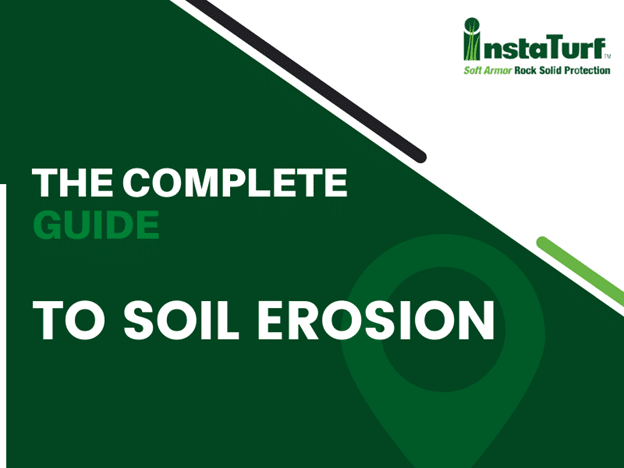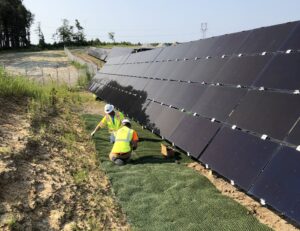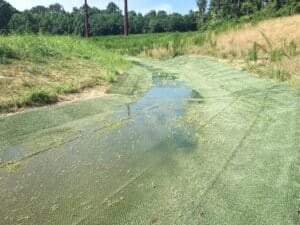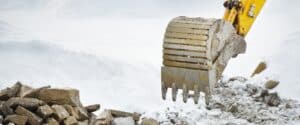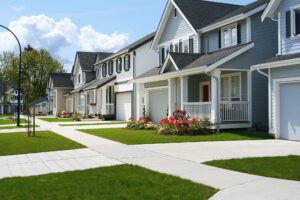Soil erosion is a process of displacement of surface soil layers due to the action of natural factors like water and wind. Also, erosion caused by human activity, referred to as accelerated erosion, has contributed massively to this type of soil degradation over the years. Sediment is a by-product of soil erosion derived from various types of water erosion, and it is transported into waterways, causing pollution and blockage.
Erosion, accompanied by sedimentation, has had devastating effects on soil and water quality worldwide, becoming a severe issue that needs to be addressed immediately and efficiently. According to the World Wildlife Organization, one half of the Earth’s topsoil has been lost due to soil erosion over the last 150 years.
Harmful sediment production may be reduced by controlling the source, i.e. soil erosion processes. People have applied numerous soil erosion and sedimentation control techniques and conservation practices to prevent further deterioration of soil and water quality. This complete guide to soil erosion will focus on these erosion control techniques applied in agriculture and construction, as the industries most affected by this soil deterioration process. First, let’s see what types of soil erosion exist and what factors affect this deterioration process.
Water Erosion
There are various types of soil erosion caused by raindrop impact/runoff, channelized flow, and wave action.
Rainfall water erosion occurs when the rainfall intensity that hits the ground exceeds the absorbing capacities or the infiltration rate of soil affected. This leads to soil in water runoff and sediment transport to waterways resulting in deterioration in soil and water quality. Three common types of rainfall-caused erosion are:
- Sheet erosion is caused by rainfall impact and runoff which detaches soil particles and transports the soil particles downslope.
- Rill erosion occurs when runoff becomes concentrated enough to cut small rivulets in the soil that carry sediment down hillsides. Gully erosion develops from rills that become too deep to drive over and fix with standard farm equipment.
Channel erosion occurs when concentrated water flows exert shear stresses on drainage channel, river and stream beds and side slopes that exceed the resistance of soil in those areas. This type of erosion acts in depth and headward, with bank erosion affecting the side slopes and scour occurring on the bottom or bed of the channel or river.
Wind Erosion
This type of soil erosion is typical in arid areas, and we can recognize two wind erosion variations. Deflation is wind erosion that occurs when soil particles are lifted and carried through the air. There are three types of deflation: saltation, suspension, and surface creep. On the other hand, abrasion is a wind erosion where surfaces get struck by particles carried by the wind.
Gravity-Induced Erosion
This erosion type implies the mass movement of soil on slopes and hillsides due to gravity. This can be a long-term erosive process, or everything can happen suddenly, leaving devastating consequences. Many people refer to this mass soil movement as landslides, while another variation is slumping. This mass movement erosion happens when a coherent mass like clay or rock layer starts sliding down a slope.
Various Factors That May Increase Erosion Rates
As you can see, the main types of soil erosion depend on the climatic conditions in specific areas, and the erosiveness of weather events. However, rainfall and runoff affect erosion rates in both temperate and arid climates, as rain storms occurring in arid climates are often intense and cause flash flooding and severe erosion. On the other hand, wind erosion is typically less of an issue than water erosion in temperate areas that receive sufficient rainfall to keep topsoil moist and vegetative cover healthy.
That said, climate is one of the numerous factors affecting soil erosion. Soil composition and structure, vegetative cover, and topography play a significant role in soil’s susceptibility to erosion (erodibility). There is also a human factor contributing massively to soil degradation with various agricultural measures, deforestation, roads and urbanization, and climate change.
Besides climatic factors, soil compaction, structure, and composition may determine the level of vulnerability to water and wind erosion. A high percentage of clay in soil will act as a cohesive that holds soil particles together and prevents erosion as opposed to less cohesive silts and sands. Organic matter from decomposed vegetation also helps to bond soil particles together and reduces the erodibility of the soil. Another determining factor that affects soil erosion is the amount of water present in the soil. If the soil is saturated and cannot absorb additional rainfall, surface runoff and erosion will likely occur.
Vegetative cover is natural erosion protection that helps prevent the harmful effects of rain and wind on the soil. Stems and leaves of vegetative cover work to break the impact of falling rain and slow runoff water velocity, while plant roots act to consolidate soil particles and hold them in place. Vegetative cover also adds organic matter to the soil, which provides temporary cover as well as long-term benefits by reducing the soil’s erodibility. The absence of vegetation as an essential erosion shield often leads to increased soil erosion. Apart from the natural factors that may affect erosion processes, there are numerous human activities that expose soil to the adverse effects of water and wind.
Some of the undesirable agricultural activities that may expose soil to erosion are mono-cropping, i.e., growing a single crop year after year, farming on steep slopes, poor tillage practices, applying pesticides and chemicals, and so on.
Deforestation is another harmful practice that affects soil erosion directly. Cutting down forests removes the protective canopy, leaf litter and humus from the soil, leaving it vulnerable to water and wind erosion.
Besides deforestation and undesirable agricultural practices, urbanization is also one of the major culprits for increased soil erosion. Building roads and other facilities removes the protective vegetative cover and increases runoff volume, which creates higher erosion risks for the construction site as well as areas downstream.
Climate change is further exacerbating all of the erosion issues discussed above as warmer atmospheric conditions are generating more frequent, more intense rainfall events in many areas, while severe droughts lead to the loss of vegetative cover and accelerated wind/water erosion in other areas.
Harmful Impacts of Soil Erosion
Numerous negative environmental and economic effects of soil erosion prove daily how this issue may have irreparable consequences if left unaddressed. Here are some major reasons why erosion and sediment control and conservation practices need to be taken seriously.
Environmental issues caused by soil erosion include:
Land degradation
Land degradation tops this shortlist of harmful effects soil erosion has on the environment. About 75 billion tons of soil is devastated by erosion annually. Additionally, the UN report states that we lose enough fertile soil each year to cover the entire country of Ukraine due to erosion caused by drought, deforestation, and various agricultural practices. According to the same report, 40% of global agricultural land is seriously degraded due to reduced soil fertility.
Water pollution
Soil sediment is recognized by the USEPA as the country’s number one water pollutant. Not only do soil sediments pollute water, but they also act as carriers for various other pollutants like pesticides and heavy metals. Excessive sediment deposition in waterways reduces their water flow capacity, leading to potential floods that will further erode the surrounding soil. Sediment deposition can also obstruct transportation on navigable waterways, requiring more frequent and expensive dredging operations.
Created under the Clean Water Act (CWA), Phase II of USEPA’s National Pollutant Discharge Elimination System (NPDES) permit program began in 2003 and addresses issues related to stormwater discharge from construction sites of 1 acre or more. It aims to regulate stormwater sources that discharge pollutants to US waters, and prescribes Best Management Practices (BMPs) for controlling soil erosion and sediment runoff from construction sites. T
Negative economic effects
Consequently, soil erosion has an adverse impact on the American economy. According to the USDA, the total estimated cost of soil erosion in the United States is $44.39 billion. This figure also includes lost productivity as well as sedimentation and eutrophication of water reservoirs. In terms of lost farm income, the annual lost income as a result of soil erosion in the United States is at $100 million.
The Importance of Monitoring and Soil Erosion Modeling
For all these reasons, soil erosion issues need to be tackled carefully and seriously. Monitoring and soil erosion modeling may lead to better understanding and devising efficient solutions for soil erosion and sediment control. However, modeling soil erosion is a demanding task because this is a complex process that requires significant knowledge in various disciplines like climatology, hydrology, geology, soil science, agronomy, and so on. The most common model used for predicting soil loss caused by sheet and rill erosion on slopes is the Revised Universal Soil Loss Equation (RUSLE). RUSLE uses the following factors to estimate soil loss from both crop land and construction site slopes.
A = R x K x LS x C x P
Where:
A = Tons of soil loss
R – Rainfall intensity/energy factor
K – Soil erodibility factor
LS – Slope Length and Gradient factor
C – Soil Cover factor
P – Practice factor (various practices used to reduce soil erodibility or erosiveness of runoff)
Facing all the challenges erosive processes may impose on the environment and economy, this complete guide to soil erosion will present you with the advantages of soil erosion and sediment control. It will also introduce some of the most cost-effective conservation practices to apply in construction site erosion protection.
The Advantages and Principles of Erosion and Sediment Control
There are evident environmental and economic benefits of effective erosion and sediment control practices. First, these practices help keep sediment away from rivers, streams, conveyances, and lakes, thus protecting their biological integrity. Simultaneously, practical erosion and sediment control techniques cut maintenance costs related to culverts, drainage systems, and road ditches. Finally, contractors can minimize construction costs by executing well-devised erosion and sediment control programs.
Here are some crucial principles of an effective soil erosion and sediment control program
- Enhance erosion control to curb soil detachment and sediment production
- Shorten construction periods to minimize bare ground exposure to erosion.
- Apply the most appropriate erosion/sediment control practices in each construction phase(including temporary and permanent seedings) Use perimeter and localized sediment control measures to reduce runoff volumes and sediment transport into on-site and off-site areas. Apply practices that prevent turbid water from leaving the construction site.
- Pay special attention to areas that are difficult to stabilize, like cut-and-fill slopes.
- Also, focus on sites near wetlands or transected by streams Monitor and maintain practices regularly to check whether they work on-site. This includes frequent inspections of the construction site and nearby off-site areas.
List of the Best Soil Management Practices
The NPDES contains a National Menu of Best Management Practices (BMPs) for stormwater. It was released in 2003 and is based on the EPA’s Stormwater Phase II Rule. There is a list of six minimum control measures on which the menu of BMPs is based on. These include the following: Public Education, Public Involvement, Illicit Discharge Detection and Elimination, Construction, Post-Construction, and Pollution Prevention / Good Housekeeping.
The NPDES BMPs include:
- Measurable Goals Guidance for Phase II Small MS4s – This is designed to help Municipal Separate Storm Sewer System (MS4) operators comply with all measurable goals.
- Urban Management Measures Guidance – This offers guidance to both citizens and municipalities in urban areas to protect their water bodies from polluted runoff that resulted from day-to-day activities.
It is, however, necessary to point out that these BMPs are not all-inclusive and will not prevent municipalities or citizens from using other techniques or practices, as long as they meet the minimum measure. There is no need to spend additional time and resources on practices that are already operational and achieving their intended purpose.
Below, there is also a shortlist of the most efficient erosion and sediment control practices you can introduce to prevent soil erosion from affecting your construction site.
This list offers the best erosion and sediment control practices in different erosion prevention and soil and water conservation stages. These conservation practices refer to site preparation, surface stabilization, runoff conveyance, and sediment control.
Site Preparation Practices
Topsoil Stockpiling is the practice of removing the fertile soil layer from the site before construction starts, storing it elsewhere, and reapplying to bare areas once construction is finished. This practice increases the probability of establishing sustainable vegetation on site after construction is finished.
Surface Stabilization Practices
Chemical stabilization involves applying various chemicals to temporarily prevent wind erosion and control dust as well as during seeding and/or mulching to reduce water erosion. People often use water-soluble flocculants for this. Beware that all chemical products need to be handled in compliance with the OSHA standards and the manufacturer’s guidelines. Re-apply these substances on disturbed or tilled areas, maintain the equipment regularly to ensure balanced dispersion of chemicals, and inspect treated areas after rainfalls.
Loose mulch, be it in the form of straw, wood chips, gravel, etc., can be used to protect the soil from the direct impact of rainfall. Each type of mulch has its own advantages and disadvantages, depending on the exact situation, geography, as well as the short- and long-term expectations.
The Erosion Control Technology Council (ECTC) defines Hydraulic Erosion Control Products (HECPs) as manufactured, temporary degradable, pre-packaged fibrous materials that are mixed with water and hydraulically applied as a slurry designed to reduce soil erosion and assist in the establishment and growth of vegetation.
The ECTC defines Erosion Control Blankets as temporary degradable rolled erosion control products composed of processed natural or polymer fibers mechanically, structurally, or chemically bound together to form a continuous matrix to provide erosion control and facilitate vegetation establishment.
The ECTC defines Turf Reinforcement Mats (TRMs) as rolled erosion control products composed of non-degradable synthetic fibers, filaments, nets, wire mesh, and/or other elements, processed into a permanent, three-dimensional matrix of sufficient thickness. TRMs, which may be supplemented with degradable components, are designed to impart immediate erosion protection, enhance vegetation establishment, and provide long-term functionality by permanently reinforcing vegetation during and after maturation.
Hybrid-Turf Instant Armor Mats are a new category of permanent rolled erosion control products developed to provide a much higher level of erosion protection before vegetation establishment than conventional TRMs. These revolutionary erosion control products like InstaTurf ShearForce Soft Armor Mats successfully combine the most prominent advantages of soft armor systems with the immediate erosion protection and endurable performance of rock riprap.
Hybrid-Turf Instant Armor Mats utilize simulated turf and engineered filtration fabric to form a virtually non-erodible boundary layer on the soil surface, even under very high flow conditions. Hybrid-Turf Instant Armor Mats are designed to protect, grow, and permanently reinforce natural vegetation. These easy-to-install products provide immediate erosion protection that’s 3 – 4 times greater than conventional TRMs and High-Performance Turf Reinforcement Mats, equivalent to 30-inch diameter rock from day one of installation. If you need immediate rock-like erosion protection for a high flow drainage channel, steep slope, riverbank, or shoreline project, but want the many advantages of vegetative soft armor solutions, take a look at the Shearforce10 Hybrid-Turf Instant Armor Mat, or Shearforce12 Hybrid-Turf Instant Armor Scour Mat. While Shearforce 10 Hybrid-Turf Instant Armor Mat is ideal for severe slopes, channels, streambanks, and shorelines, Shearforce 12 Hybrid-Turf Instant Armor Scour Mat effectively protects culvert and pipe outfalls, down chutes, and the other turbulent flow areas.
Runoff Conveyance Practices
A check dam is a small dam constructed in a concentrated flow area to slow water flow, reduce flow energy and subsequent channel erosion. These dams, also called ditch checks, are often used in drainage ditches and can be made out of the rock, wattles, silt fence, or sandbags. Proper installation of check dams is the utmost priority considering the significant role they play in interrupting concentrated flows. Make regular inspections after heavy rains or storms and repair any damage. Remove deposited sediment before it gets to half of the dam height.
A diversion berm or ditch is installed on stable grade and stabilized with mulch, vegetation, or some other non-erodible material to direct concentrated water flow away from erosion prone areas to a secure, non-erodible outlet.
Temporary Diversions often consist of swales lined with erosion control blankets, mulches, and/or vegetation. Permanent diversion ditches may utilize the same materials, or, if expected flow conditions exceed the limitations of natural vegetation, a Hybrid-Turf Instant Armor Mat or hard armor lining such as rock riprap may be required.
Outlet Protection practices prevent channel erosion by decreasing flow velocity and dissipating the energy. These can come in forms of riprap-lined aprons or reinforced concrete boxes with chambers or baffles. The ShearForce12 Hybrid-Turf Instant Armor Scour Mat used in conjunction with vegetation is an ideal soft armor alternative to riprap and concrete in many of these flow transition areas as well.
Sediment Control Practices
There areawide variety of sediment control practices and materials used to reduce sediment run-on into certain areas on job sites as well as runoff from the site onto adjacent property or into waterways. A few of those often employed included silt fences, wattles, retention/detention basins,soil flocculants, and protective barriers around stormwater inlets. All sediment control devices and structures must be inspected after storm events for damage and deposited sediment and typically should be cleaned out when the structure or device reaches ½ of its capacity. It must be noted that sediment control is the last line of defence, and properly installed, effective erosion control materials and practices can reduce the need for sediment control and frequency of maintenance of those devices/structures which are employed.
Conclusion
Soil erosion naturally occurs because of water and wind action but is accelerated by human activity. Accelerated erosion is a soil degrading process that has numerous adverse effects on the environment such as land degradation, water, and air pollution. This leads to substantial economic costs associated with dredging of sediment in waterways, treating contaminated runoff water, damage to infrastructure, decreased agricultural production, and reduced soil fertility. For all these reasons and more, it is important to focus on effective soil erosion and sediment control practices that will minimize these harmful effects and economic impact. This complete guide to soil erosion offers a comprehensive insight into this serious issue. It provides you with the best erosion and sediment practices you can apply to mitigate this harmful process and protect construction sites. If you need highly cost-effective erosion control products, please visit our site https://insta-turf.com, or dial 812-483-1532.

